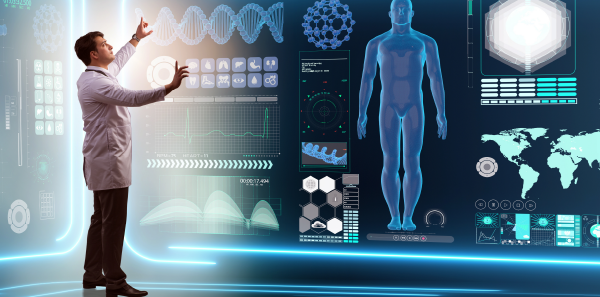Introduction
Emergency medicine is a field that constantly evolves to meet the urgent needs of patients. It requires quick thinking, immediate action, and a compassionate approach to care. As we look to the future, the integration of innovative technologies and practices promises to enhance the effectiveness and efficiency of emergency medical services. This article explores the advancements shaping emergency medicine and how they improve patient outcomes.
Technological Advancements
Telemedicine
Telemedicine is revolutionizing how emergency care is delivered, especially in rural and underserved areas. By using video conferencing and other digital tools, healthcare providers can offer immediate consultation and guidance to remote patients. This reduces the need for travel and ensures that patients receive timely care.
Point-of-Care Diagnostics
Point-of-care diagnostic tools allow for rapid testing and results, enabling doctors to make quicker decisions. These tools include portable ultrasound machines, blood analyzers, and other devices that can be used directly at the patient’s bedside. This immediacy is crucial in emergency settings where every second counts.
Artificial Intelligence (AI)
AI is increasingly being integrated into emergency medicine. AI algorithms can analyze vast amounts of data quickly, aiding in the diagnosis and treatment planning. For instance, AI can help predict patient deterioration, identify the best treatment protocols, and even assist in triaging patients based on the severity of their conditions.
Improving Access to Care
Mobile Health Units
Mobile health units are essentially clinics on wheels that bring medical services directly to communities in need. These units are equipped with the necessary tools and staffed by healthcare professionals who can provide emergency care, vaccinations, screenings, and more. They are particularly beneficial in disaster-stricken areas or regions with limited access to healthcare facilities.
Community Health Programs
Engaging communities in healthcare initiatives is vital for improving access to emergency care. By involving residents in the planning and implementation of healthcare programs, communities can better address their specific needs. Dr. Gianluca Cerri, MD, emphasizes that community-driven approaches are often the most effective. When residents take an active role in their healthcare, they are more likely to see positive outcomes.
Training and Education
Simulation Training
Simulation training uses advanced technology to create realistic medical scenarios for healthcare providers to practice on. This type of training helps emergency personnel prepare for a wide range of situations, from natural disasters to mass casualty events. It enhances their skills and confidence, ensuring they are ready to handle real-life emergencies.
Continuing Education
Continued professional development is crucial in emergency medicine. Medical professionals must stay updated on the latest research, treatment protocols, and technologies. Many hospitals and institutions offer continuing education programs, workshops, and seminars to keep their staff informed and skilled.
Patient-Centered Care
Compassionate Communication
In emergency medicine, clear and compassionate communication is essential. Patients and their families often find themselves in stressful and frightening situations. Healthcare providers must communicate effectively, offering reassurance and information that can help ease anxiety and confusion.
Holistic Approach
A holistic approach to emergency care considers not just the physical but also the emotional and psychological needs of the patient. This involves creating a supportive environment, providing mental health resources, and ensuring that patients feel heard and respected throughout their treatment.
Real-Life Impact
Case Studies
Several case studies highlight the impact of integrating technology and compassion in emergency medicine. For example, a rural hospital implemented telemedicine to connect with specialists in urban centers. This reduced patient transfer rates by 30% and improved treatment outcomes. Another example involves a mobile health unit deployed in a disaster zone, providing immediate care to hundreds of individuals who otherwise would have had no access to medical services.
Success Stories
Success stories from various emergency departments show the positive outcomes of adopting innovative practices. For instance, an urban hospital’s use of AI in triage resulted in a 20% reduction in waiting times and improved patient satisfaction. Similarly, a community health program that trained local residents in basic first aid and emergency response led to quicker, more effective care in remote villages.
Conclusion
The future of emergency medicine lies in the seamless integration of innovation and compassion. By adopting new technologies, improving access to care, and focusing on patient-centered approaches, healthcare providers can ensure better outcomes for patients in critical situations. The examples and success stories discussed here illustrate the potential for these advancements to transform emergency medicine, ultimately saving more lives and enhancing the quality of care. As we move forward, continued investment in these areas will be crucial in addressing the ever-evolving challenges of emergency healthcare.




